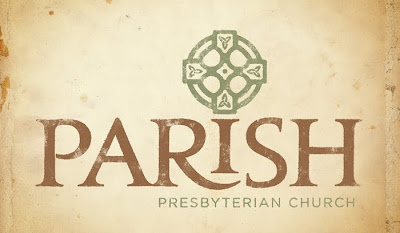England, the mid-sixteenth century. The large, splendidly decorated banqueting hall in which you and your fellow guests are seated is octagonal in shape, with galleries situated on four of the opposing walls. Soon you and your fellow nobles (perhaps even the Queen herself is also in attendance) will be feasting on sumptuous delicacies. But amidst the hushed banter that precedes the opening of the banquet, you notice that some preliminary musical entertainment has apparently been appointed, as is not uncommon for such events. In groups of five, singers are gathering, on the lower level with the guests, and also up in the galleries, forming eight groups of forty singers, arranged all around the perimeter of the hall, above and below. The choir master makes his way to the center of the room as a hush falls over the throng of guests.
At his signal, a single alto voice from the five-person choir at the north end begins to sing, joined quickly by a soprano from the same group. After a few bars, the baritone, tenor and bass from the same ensemble have entered in. And then, the choir in the neighboring gallery takes up the theme, as gradually the music spreads around the room toward the east, weaving up and down as it goes.
Spem in alium nunquam habui . . .
As the music continues to make its way to the southern end of the hall, the realization begins to dawn on you that none of the singers is doubling the other – each of the exquisitely intertwined voices is singing a unique part. The choirs at the southern end awaken, and the swelling chorus of voices echoes off the walls – and the floor, and the ceiling. But then, just as the progression begins to make the turn round to the heretofore silent western side of the hall, the choirs to the north and east begin to fall silent, in successive order: a sonorous wave is encircling the entire room. When it reaches the northern end again, the choirs at the opposing southern side re-awaken. For a few moments, the stereophonic interplay of the northern and southern choirs continues and grows to an anticipatory crescendo, until suddenly, all forty voices burst forth together for the first time in a great, beatific roar.
Praeter in te, Deus Israel! . . .
After a few bars, the roar subsides and, as the text continues to unfold, the musical wave resumes, circumnavigating the hall again, this time in the opposite direction. Another forty-voice outburst ensues. And then, pairs of adjoining choirs begin a call and response with opposing choirs at opposite ends, and the music is hurled across the hall, back and forth from north to south, then east to west, then south-west to north-east, etc. As the thundering voices echo from end to end and reverberate from on high and down below, the dining hall is transformed into a musical microcosm of the universe itself, resounding the Creator's praises throughout.
Domine Deus! . . . Domine Deus! . . .
Creator! . . . Creator! . . .
Coeli et terrae! . . . Coeli et terrae! . . .
The musical kaleidoscope swirls for a total of about ten minutes, closing as all forty voices unite one last time, rapturously appealing to God for mercy. The sound reverberates throughout the hall for a long while after the last note is sounded, as you and your fellow guests sit in dumbfounded amazement at what you have just heard and experienced. No matter how sumptuous the food or delightful the entertainments that are yet to come, the rest of the evening – perhaps, in some sense, the rest of your life – can only represent a declension. At the very least, you know that, this side of heaven, you will never hear such music again – a hope far too audacious for mortal ears.
The man responsible for this musical miracle was Thomas Tallis, who died on this day in 1585. The above account is an imaginary recreation of what the original performance may have been like, based on sketchy circumstantial evidence. The earliest manuscripts of the work are associated with Nonsuch Palace, which may be where it was originally performed, though the exact occasion is uncertain. This fabulous palace, built by Henry VIII, no longer stands (it eventually passed into the hands of one of the mistresses of Charles II, who had it demolished and sold off in piecemeal fashion to cover her gambling debts), but it is known to have had a banqueting hall situated in one of its large corner towers, fitting the above description.
The Latin text is adapted from the apocryphal Book of Judith:
Spem in alium nunquam habui
praeter in te Deus Israel
qui irasceris et propitius eris
et omnia peccata hominum in tribulatione dimittis.
Domine Deus Creator coeli et terrae
respice humilitatem nostram.
An English translation:
Never have I placed my hope in any other
save in Thee, O God of Israel,
who may be wrathful, yet will turn again unto graciousness,
and who absolveth all the sins of suffering man.
Lord God, Creator of Heaven and Earth
look upon our lowliness.
Composers and other artists often play numerical games within their works (Bach, most famously) and it is likely that some of the numbers involved in this composition were not mere happenstance but rather bore some significance in Tallis’ mind, especially when considered in light of the text. Five has long-standing mystical associations (quintessence), forty is the biblical number of judgement and suffering, while eight is the number of regeneration and renewal. The numbers could thus be seen to reinforce the theme of the text: hopeful expectation of deliverance in the midst of some sort of Divinely-appointed tribulation, perhaps related somehow to the violent religious upheavals of sixteenth century England. Some have even put forth evidence that Tallis may have inserted his own musical signature into the piece.
It is worth trying to follow along with the score while listening to a performance, though no recording techniques or surround-sound equipment currently in existence could come close to replicating the effects of a production in anything like its original setting and context. To experience that first hand would be nothing short of a dream realized.























































